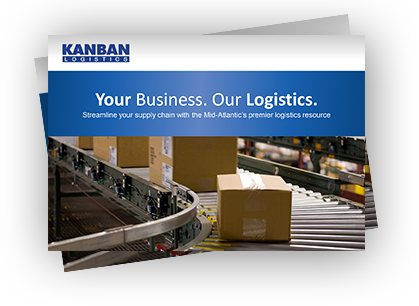If your business is growing and you’re starting to consider warehousing options, the prospect may seem a bit daunting. Warehouses are large facilities after all, so that must mean large costs, right?
Not necessarily.
If you’re going it alone and building or renting a full warehouse for your operation, then yes, warehousing costs can be significant. If, however, you’re partnering with a third-party logistics company (3PL) for shared (or “public”) warehousing services, then your costs will only reflect the space and services you need. In this article, we’ll examine 3PL warehouse costs and provide you with the information your 3PL will need from you to provide accurate pricing.
Types of warehousing
If your operation is looking for warehousing, you have three basic options.
- Go it alone and either build or rent a warehouse yourself. This by far your most expensive option. With this model, you pay for the building, the staffing, the equipment, the warehouse management system, and other technologies. If your actual volumes don’t match your forecasts, you can be left paying a lot of money for resources you’re not using – or scrambling to add resources to keep up.
- Utilize dedicated warehousing services of a 3PL. With this option, you pay a 3PL to fully dedicate one (or more) of its warehouses to your operation. Your 3PL can provide the staff, equipment and systems needed – saving you significant amounts of time and money and acquiring these yourself.
- Utilize a shared warehousing model. Shared warehousing is the most common – and least-expensive – type of warehousing. With this option, you utilize a 3PL warehouse and house your goods alongside several other companies and pay for only the space and services you require. Your 3PL can accommodate any shifts in space or resource requirements – effectively scaling your footprint to your needs as they change over time.
Determining 3PL warehouse costs
 If you decide to partner with a 3PL for either dedicated or shared warehousing, there are many factors that will affect your costs.
If you decide to partner with a 3PL for either dedicated or shared warehousing, there are many factors that will affect your costs.
The first factor you need to address in determining warehouse costs is the location. As a rule, warehousing in large metropolitan areas is going to be far more expensive than it will be in rural areas.
The second factor is whether you need dedicated or shared warehousing services. The more expensive of the two, dedicated warehousing is typically a good fit for larger operations that have very consistent volumes. This volume consistency is vital as your 3PL will build its operation to accommodate your business. If your volumes dip, you can end up wasting money on space, staffing and services that aren’t being used.
Next, you need to perform a thorough analysis of your needs and product characteristics.
Information your 3PL will need from you
Just about every 3PL will have a standard rate for the square footage you require, but square footage is only part of the story. You will need to provide your 3PL with greater detail about your products so that they can determine the services and type of space needed in order to provide you with an accurate quote.
The following are examples of storage and handling information your 3PL will need from you to determine precise costs.
Storage information
- Average pallet dimensions (height, width, weight, depth)?
- Pallet characteristics (e.g., stackable or racking)
- Average inventory (in terms of number of pallets)
- Number of cases per pallet
- Inventory turns per year
- Number of shipments per year
- Estimated inventory value
- Product temperature requirements
- Hazardous material information
- Preferred billing unit (i.e. case, cwt, line item, etc.)
Handling information
- Number of orders processed annually (B2B and B2C)
- Average order size (pallets if B2B, pieces if B2C)
- Pick and pack requirements (for eCommerce fulfillment)
- Average number of inbound orders per day
- Average number of outbound shipments per day
- Percentage of cross dock shipments
- Stock rotation protocol (e.g., FIFO, Date code, Lot code, Random code, customer select code, etc.)
- Transportation requirements
- Parcel requirements
- Intermodal and container details/requirements
Work with your 3PL for accurate warehouse costs
If this information seems overwhelming, it doesn’t need to be. Your 3PL can work with you to obtain the information it needs.
It is also important to note that almost everything in a 3PL warehousing contract can be negotiated. You provide your 3PL with the necessary details, it returns with a quote, and you can negotiate specifics from there so that both parties are happy.
Turn to Kanban Logistics for competitive 3PL warehouse costs
If you’re looking for a 3PL to act as a true partner in your warehousing operation, look no further than Kanban Logistics. With over 1 million square feet of warehousing space in Eastern North Carolina, we have the space, services, and commitment to customer satisfaction needed to make your transition to the world of warehousing a smooth one. To learn more about our capabilities, contact us today.
Never Miss a Blog Post
Join our email list to receive new posts in your inbox. We will never spam you. Opt out anytime.
Blog Post Categories
- Outsourcing 3PL (72)
- Warehousing (72)
- North Carolina (52)
- east coast logistics (47)
- manufacturing logistics (26)
- Food Logistics (19)
- Fulfillment (18)
- CSX Carolina Connector (17)
- Miscellaneous (14)
- Free Trade Zone (FTZ) (12)
- FTZ / Free Trade Zones (11)
- Intermodal (11)
- Rail Siding (11)
- Port of Virginia (10)
- Cross Docking (7)
- Kitting (5)
- Aerospace (3)
- Pharmaceutical (3)
- Kanban News (2)
- QVC Rework Services (2)
- COO (1)
- container yard services (1)
- flexible (1)
- operations (1)
- scale (1)
- scott freeman (1)






